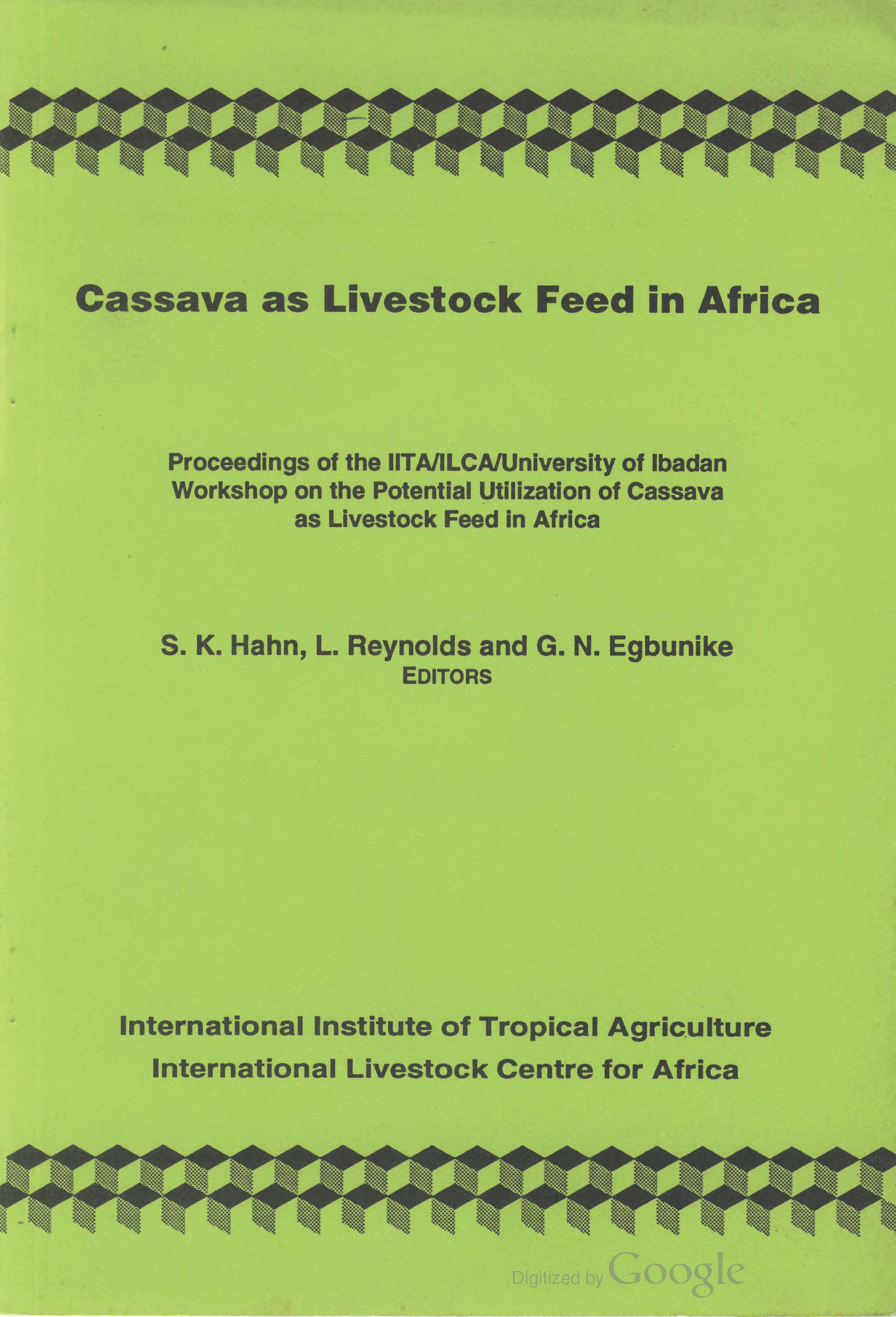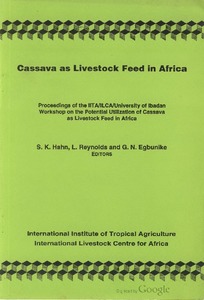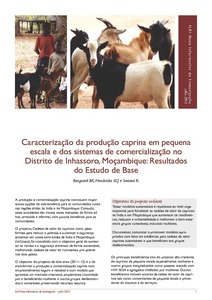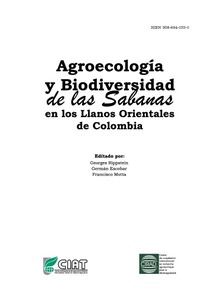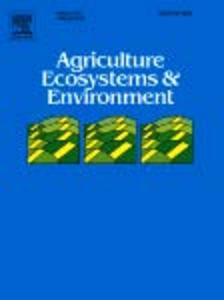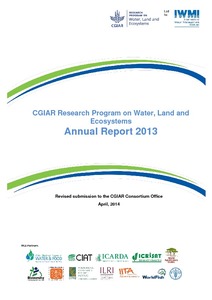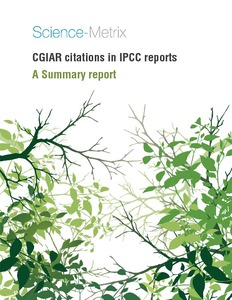rangelands
AGROVOC URI: http://aims.fao.org/aos/agrovoc/c_6448
Cassava as livestock feed in Africa. Proceedings of a workshop
The aim of the workshop is to collect information on traditional African processing technologies with emphasis on cassava as a livestock feed, to review the marketing and economics of cassava by-products, to recommend strategies for future research and development on the processing and utilization of cassava as a livestock feed, and to disseminate up-to-date information on cassava.
Capacity to Innovate from a System CGIAR Research Program Perspective
Cassava as livestock feed in Africa: Proceedings of the IITA/ILCA/University of Ibadan workshop on the potential utilization of cassava as livestock feed in Africa
Caracterização da produção caprina em pequena escala e dos sistemas de comercialização no Distrito de Inhassoro, Moçambique: Resultados do Estudo de Base
Caracterización de comunidades vegetales de la altillanura en el Centro de Investigación Agropecuaria, Carimagua, en Meta, Colombia
Carbon sequestration potentials of semi-arid rangelands under traditional management practices in Borana, Southern Ethiopia
A study to determine carbon sequestration potentials and soil attributes was conducted in Borana rangelands of southern Ethiopia under communally grazed areas, grazing enclosures (rangelands enclosed for 20 years for dry season grazing) and rangelands managed by prescribed fire for more than five years after fire application. Soil attributes were collected from three soil depths (0–10 cm, 10–20 cm and 20–30 cm) and both aboveground and belowground carbon were estimated in all treatments.
Carcass characteristics of adult sheep and goat breeds in the subhumid and semi-arid zones of Cameroon
Data from slaughter (LWT) and warm carcass (HCWT) weights and dressing-out percentages (CYD%) of 209 Uda (Sahel) and 26 Djallonke sheep and 105 Djallonke goats were analysed by fitting a least-squares fixed-effects model. The model consisted of the effects of breed and sex on LWT and CYD% and the effects of breed, sex and LWT (as covariate) on HCWT for the sheep data. The effect of sex alone on LWT and CYD% was fitted for the goat data. As for the goat carcass data, HCWT was regressed on LWT for each sex subclass. Effect of breed significantly affected all carcass traits in the sheep.
CCAFS Site Portfolio: Core Sites in the CCAFS Regions: East Africa, West Africa and South Asia
The CGIAR Research Program Climate Change, Agriculture, Food Security (CCAFS) is a 10-year research initiative launched by CGIAR and the Earth System Science Partnership (ESSP). CCAFS seeks to overcome the threats to agriculture and food security in a changing climate, exploring new ways of helping vulnerable rural communities adjust to global changes in climate.
CCAFS Baseline Survey Indicators for Borana/Yabero, Ethiopia
This document series compiles key indicators from the three levels of the baseline for each site. Indicators include: demography and basic site characteristics of each site, rainfall distribution, changes in farming practices and land management, income sources, food security and food
sources, asset ownership by households and involvement in organisations and more. This CCAFS baseline indicator document was developed for the CCAFS site at Borana/Yabero, in Ethiopia.
CGIAR citations in IPCC reports: a summary report
In March 2015, Science-Metrix was contracted by CGIAR to evaluate the presence of CGIAR publications in the IPCC assessment reports (ARs). The study was carried through the analysis of the IPCC ARs' references.


